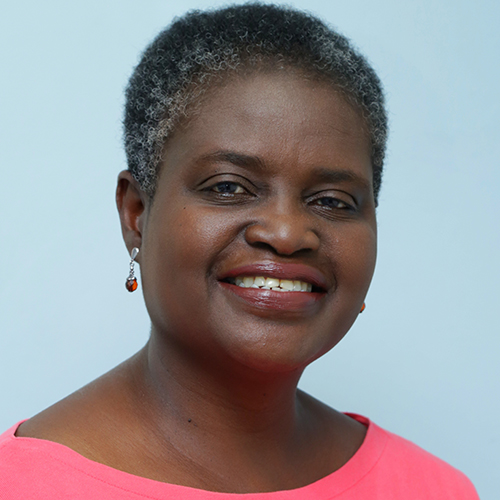A novel new idea to give people the ability to grow fish in their own homes using aquaponics kits is picking up momentum, under an FAO initiative to increase global food security.
According to Iris Monnereau, regional project coordinator of the Climate Change Adaptation of the Eastern Caribbean Fisheries Project (CC4FISH), a project backed by the United Nations’ Food and Agriculture Organization (FAO), the home aquaponics movement is gaining traction.
“Aquaponic systems can be located inside the home, thereby providing a secure means of income generation and nutritional security at the small-scale level,” Monnereau said. “It thus improves food security while not further increasing pressures on marine fisheries in the region, which already face high levels of overexploitation.”
Aquaponics is defined as an emerging technology that supports integrated aquaculture and vegetable production. It combines the two most efficient methods in their respective fields: recirculating aquaculture systems (RAS) and hydroponics.
“Aquaponics combines these two production systems: nutrient-rich aquaculture water is recirculated through standard hydroponic growing beds,” Monnereau explained. “This eliminates the need for fertilizer, as all of the nutrients required by the plants are supplied through the fish wastes. The plants clean the water for the fish, thereby eliminating the need for water exchanges and thus reducing the need for water.”
To promote the uptake of this sustainable form of food production, the FAO launched the project “Advancing Aquaponics: An efficient use of limited resources: Towards a Caribbean Blue Revolution,” in Antigua and Barbuda, the Bahamas, Barbados, Saint Kitts and Nevis.
CC4FISH and the Caribbean Blue Revolution project have both trained entrepreneurs in aquaponics and supported the establishment of aquaponics demonstration centres in various Caribbean countries, mostly at private farms, in order to support further adoption of aquaponics.
Though food grown by aquaponics has thus far served only the domestic market, the FAO-sponsored training has generated widespread interest. So far for the year, 18 persons from around the Caribbean have undergone training in aquaponics through the FAO initiative – many of them at the Indies Greens farm in Antigua, Monnereau told SeafoodSource.
Indies Greens owner Larry Francis told SeafoodSource the FAO's training program in aquaponics was created in response to the Zero Hunger Challenge issued in 2012 by then-U.N. Secretary-General Ban Ki-moon, at a conference held in Rio de Janeiro, Brazil. At the conference, the secretary-general called on governments, international organizations, political and business leaders, civil society, academics, and activists to step up efforts to end hunger.
“In a world of plenty, no one – not a single person – should go hungry,” Ban said.
Francis said during a 2012 visit to Antigua and Barbuda, representatives of the FAO identified the aquaponics training project at Indies Greens as a “high-quality and feasible” option for supporting the Zero Hunger challenge, during a 2012 visit to Antigua and Barbuda.
While the Blue Revolution project has ended, training through C4FISH will continue for another three years.
“So over the next few years we hope to train at least 15 more farmers every year,” Monnereau said.
According to Francis, the objective of the five-day training program focuses on supporting the strategic development of aquaponics through capacity development of the participants, so that participants will be prepared to successfully build, manage, and operate a commercial aquaponic system. The intensive workshop is divided between classroom presentations and hands-on practical training that, it is hoped, will achieve the following:
- Developing common knowledge of aquaponics, highlighting the opportunities of efficient and sustainable production while identifying the risks, costs and other issues that prevent wider implementation.
- Supporting the adoption of commercial aquaponic production particularly through technical training, business plan development and market analysis, technical production modelling, and demonstrating unit design.
Many of the course participants had already ventured into aquaponics before going on the course, said Monnereau, but “this training served to improve their technical skills and knowledge to improve their facilities.”
Nevertheless, aquaponics operators in the region face significant challenges. These include the cost of power, the availability of service points, as well as the cost for new installations.
“Additionally, limited availability of technical assistance and lack of local inputs also pose challenges for aquaponics and potential aquaponic operators,” Monnereau told SeafoodSource.
The FAO helps with technical assistance and in some cases material to lower the cost of installation, Monnereau said.
“[But] it would be good if a partnership with another organization was sought to improve the use of solar panels to bring down the power costs and decrease the dependence on the grid which at times can be unreliable,” she added.
Despite these challenges, Francis, of Indies Greens, is upbeat about the prospects for aquaponics development in the region. The technology is relatively simple and easy to adopt once demonstrated, he said, and the advances in technology make it a viable undertaking in countries like the Caribbean that have limited freshwater resources, limited land, and high sale prices of fresh vegetables and fish.






